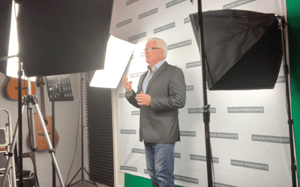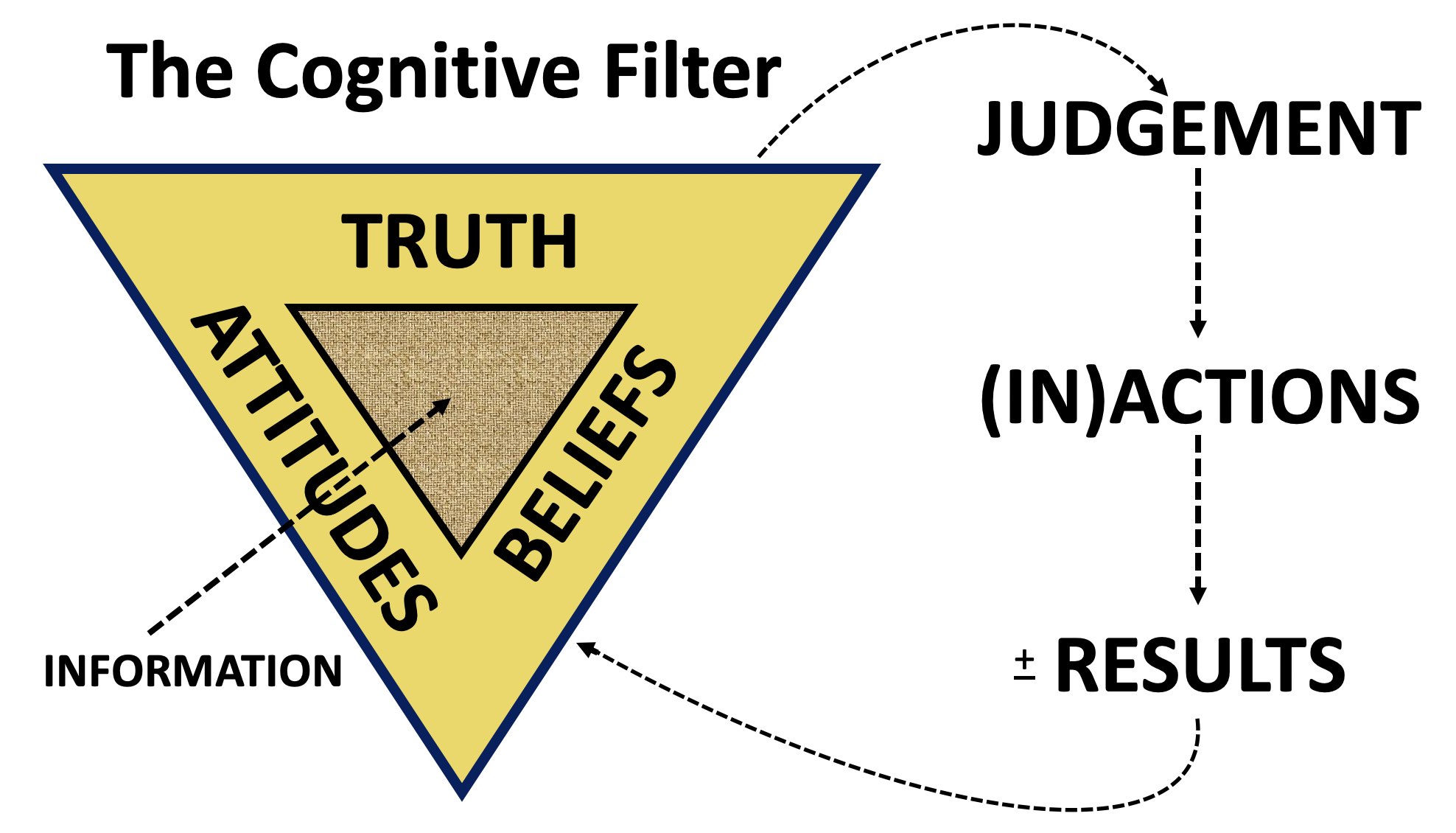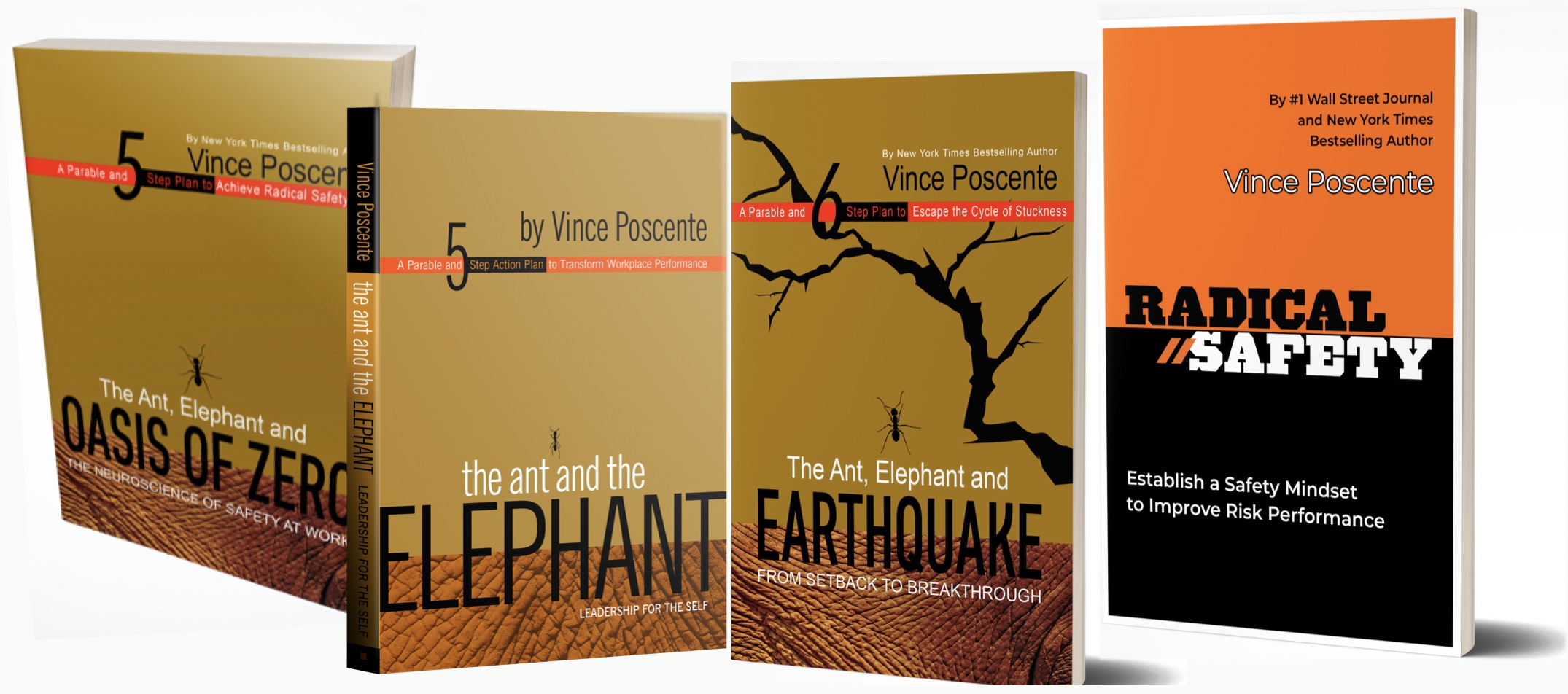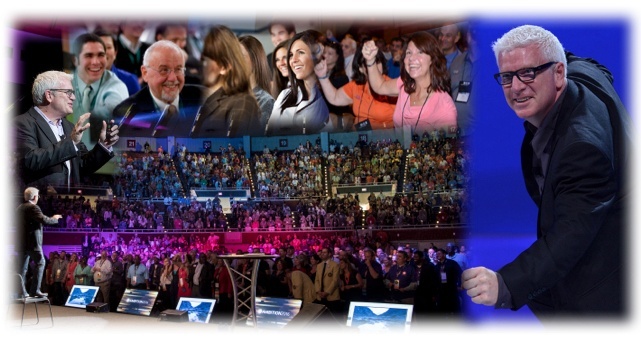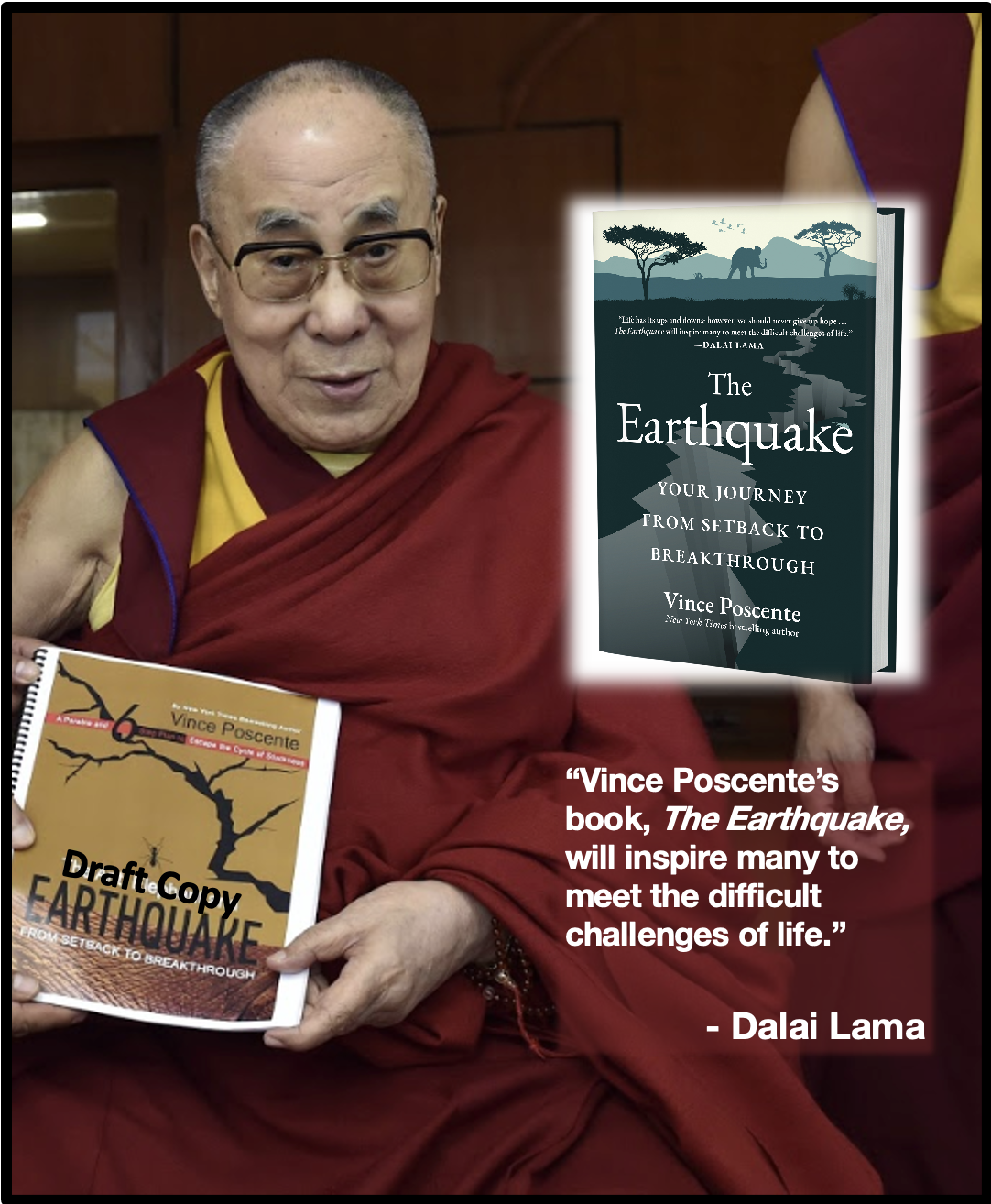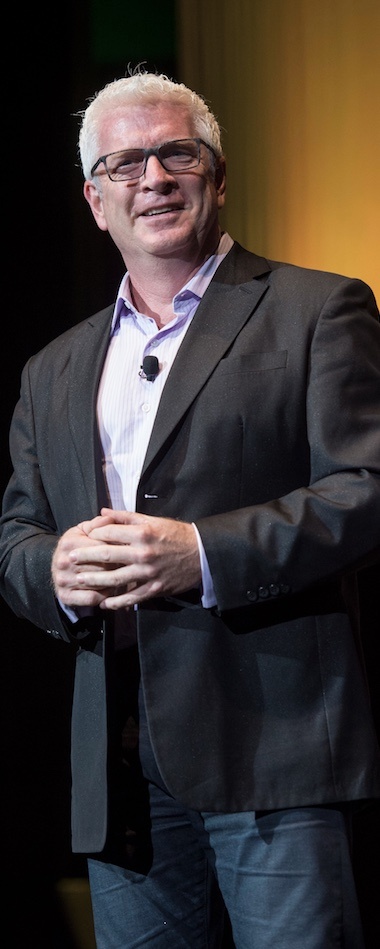Here are insights from Safety Leaders Helping Safety Leaders through these challenging times. Vince Poscente, Founder of Radical Safety interviews Davide Vassallo, CEO of DuPont Sustainable Solutions (25 min).
Interview Transcript: "Hello everyone, Vince Poscente here with Radical Safety and we have a special guest here today: Davide Vassallo, the CEO of DuPont Sustainable Solutions."
- And so Davide, welcome to the call here! We've got some COVID crisis going on here, we've got a very fluid thing and I wanted to get you online here with all of us and just talk a little bit about safety leaders, talking to safety leaders and getting a sense of the kinds of things we can do in this very fluid situation. So, I know with your background, with DuPont Sustainable Solutions as CEO, and also the background- I actually wrote a few things here. Seven years with Arthur D. Little, you were with the Italian Environmental Protection Agency as well, back in the day.
Obviously born in Italy, and I like to consider us paisans, because my dad was Italian, but my mom was Irish, so I told you before that means I'd be a great lover if I was ever sober. (laugh) So, let's have fun with this call. Then, you're a dad too! And you live in Philadelphia so, with that, I just wanted to get a sense of the kinds of things that DuPont Sustainable Solutions is doing right now and you as a leader to kind of, in this fluid situation, how are you communicating internally? How are you suggesting leaders communicate externally as well?
Davide: Thank you for the invitation. I really like this opportunity to exchange some thoughts and bring some ideas together. So how do we communicate in this moment? You know, DSS, as you rightly say, we are a global company. We have operations in 40 countries and more. So for us, being connected is the first priority, right? As a leader of this company, in the first days of the emergency, my main concern was, okay, how can I get connected? How can I make sure that the people are safe at home and they are connected? So, we are doing a lot of communication activities. One that I'm doing, and I think it's quite innovative as a leader, is, I just ran eight calls with eight people each call. Small meetings, randomly selected people in the organization. Just to ask them what was concerning them, and what are the reason of anxiety and their exasperation we have in this very unusual time. And believe me, it was fantastic. I mean, the amount of feedback and truly original sharing that happened in these small calls, was for me, a great value for the entire organization.
Vince: Now, when you reach out to people, and, I know the tendency as a leader of a company, even a small company like mine, but any safety leader, will say, okay, this is what we're going to do. But I'm finding people just want to be listened to and heard in this situation.
Davide: That's exactly my learning was out of this process. It's about listening. You know, the solutions are already there. The role of a leader in a crisis like this, is not telling people what to do; but listening what are the solutions and then selecting the priorities. Because, you know, if you have 1,000 people, probably you have 1,000 ideas. So you need to make sure that you pick the right one. And you align the organization. So, I'm going to listen as much as I can. From my organization, from my clients, from my competitors, from everybody because the solutions are already there. It's picking the right one that is the challenge.
Vince: From our original connection, we talked a bit about high-preforming sports and with my Olympic background with skiing, and yours with the international championships with rowing, obviously athletes can come to an equation maybe a bit differently. What can you share in terms of your athletic background and how that can serve you in safety leadership today?
Davide: Yeah, it's a great question, and I would talk for hours about this. I was a rower, back in the times, so, enjoying the rowing on lakes and rivers and sea. So, I mean the goal-setting is probably the biggest learning event I'm still applying today. Clear goals, clear direction, clear resourcing about what you want to achieve. So I think I'm well-known because I work by goal. Give me a goal, and I will make it, right? Don't give me a process. Give me a goal, and I will make it happen. But then it's about the discipline, you know, discipline or practicing every day. You have the sweating and sweating, you know, in the gym, on the boat, on the ski, or whatever you are practicing your activity. So in our company, we believe that discipline, it's important to achieve the goals that you are giving yourself. And then, there it is the most enjoyable part, which is the teamwork. You know, sport is about team. Even if you are a single player, you need a coach, you need an athletic support, you need your family around you. So, goal-setting, discipline, and teamwork are my takeaway from 20 years of rowing.
Vince: I was thinking at the same time, you know, it's funny, I've been very much a goal-oriented athlete, as well, in the corporate landscape. And, as I get older, I start to realize, I'm finding a balance between goal-setting and letting go at the same time. Being able to allow things to play out because if I get too locked in on one focus, I'm missing something on the outside as well.
Davide: So, that's a great point because as a sport, people, our goal was: okay, I need to perform, four years from now, into a world events. Could be the Olympics or something else. And you don't want to delay, right? You know, the results are coming if you stay focused. In business and in life, the flexibility to adapt is fundamental. I think of it, what we are learning with DSS and with many of our clients, that we see already the difference now, two months into the COVID-19 crisis, we see companies that are reacting much, much better because they have the flexibility and the speed to rearrange their plans faster than others. So, now the system is under pressure and you see winners and losers that are already going in different directions, it's unbelievable. It's really impressive, what you see in the market.
Vince: We're seeing a constant improvement in the lowering of incident rates thanks to artificial intelligence, AI, thanks to automation, and what's revealing itself more and more is the human error element with our clients, I'm finding that they're, the ones that are really winning are reaching out to their people and having them engage in the safety solutions. What are you noticing from the DSS standpoint, in terms of that human error piece? What's the missing link for you and the solutions you provide? You know, there was something that really jumped out at me: DSS helps their clients reduce risks and improve operations. Reducing risks, improving operations, that one commonality is the human error piece. What's going on there? What's your advice in terms of lowering incident rates from that standpoint?
Davide: Yeah, that's a fascinating topic. I think there are two sides of the answer here. So one side, we see the artificial intelligence has been designed around the machines. So we believe and we observe that what we need to do now is design around the individuals. Because at the end, it's them moving in the working environment. It's them taking the decision. It's them deciding to go right or left. So, we still are at the very early stages of enhancing the human capability to take better, smarter decision in the work field. So, and I'm sure you are aware, we created this technology platform called SafetyTech. And we collected more than 100 plus technologies that are people-centric, right? To help people in the execution. And you see they are a small subset of the big investment that are going on, the artificial intelligence smart technology. Because all the rest is going to support the machines and not the people. So this is one side that we need to make some progress there. The other side, as you said, is the two things, managing safety or reducing risk, and improving operations are hand-in-hand. You cannot have a smart safety system in a broken industrial environment. So if you are unproductive, you cannot be safe. You know, it's very contradiction that sometimes we tolerate because we don't want to go to the deep of the program. But the deeper the program is that, an engaged workforce is driving superior performance in production and safety. Not one of the two. But the core is engaged, capable workforce. That's of the two, for me are the two key elements. You need to have your workers engaged and capable to execute the task you give.
Vince: You know, that leads to the safety mindset and what brought me to DSS originally was the neuroscience of safety and, "The Ant and The Elephant", the book about the conscious and subconscious mind going in the same direction. And so, when it comes to the safety mindset, what are you seeing in terms of the neuroscience of safety and the advances that are being made in the safety landscape at this time?
Davide: The answer: I see a huge opportunity to improve. You know, we are at the very early stage of neuroscience applied on the workplace. We made progress, but still a lot of work to do. I share an example there, that I was discussing with the CEO of a large global organization recently. And we've known each other for many years, so we have a certain amount of, you know, good, personal relationship. So, he was telling me, "Davide, I'm concerned because I need to lay off thousands of people now, right? Which is sad, but in many places, is the reality of what is happening in these days. I'm concerned about the people remaining because the impact on the people remaining will be the motivation, will be anxiety, will be fear. So they will take away their eyes from the ball, right? From the focus on the task that they need to execute." So, he is a very aware safety and global leader. He said, "I'm expecting that I will have more incidents in the coming months because the people will get distracted." Because neuroscience is the connection between heart and minds, will be impacting by the consequence of the COVID-19 crisis and layoffs. So we had a long discussion about, okay, how can we avoid this problem? So, and the possible solution was we needed to re-motivate and refocus the workforce to focus on the better future versus this not-so-good present. So there is a process that we are starting to try to refocus the organization on the risk awareness, given the changing of context, new solutions related to technology. So he's investing more in safety. I think he is a great leader because on one side he has to reduce the workforce. On the other side, he's investing in the company to elevate the capability of the workforce.
Vince: Let me ask you a question, it's a dynamic that I keep seeing more and more and it is the budgets that are given to the safety elements, meaning, not just OSHA regulations or regulations, but the budgets that some of the safety professionals I'm working with end up not getting as much money as they need, yet there's a bottom line effect on incident rates and multiples and really, there's a huge cost to having incidents. So, what would you say to the leaders who are listening (mostly it's safety leaders that you're preaching to the choir on the one). But what kinds of ways can we get those budgets approved especially with today's shrinking amount of money that's available? What's the magic wand?
Davide: Look here, if I would have the magic wand, I would be sitting on some beach somewhere. But, I think I would be a bit controversial on this, Vince, I think that if we are asking about the budget, specific to the safety leaders, it's already wrong. Because it means that there is a certain amount of dollars allocated for safety performance. And it will never be enough because it's a kind of view the pocket money out of the kids to do their, you know spending. We need to target the money that is critical to the business. Money that's mission critical to the company. And usually this money is sitting in two buckets.
One, it is sitting in operations and business units because they need it to run operations. That's when we go back to reducing risk, improving operations together. So, the money for safety needs to be part of the operational budget and the COO or the business unit president who also may need to feel accountable to deliver both. For business performance and the safety performance.
Two, the other nice bucket of money that it's getting bigger and bigger to be invested in safety is sitting in the technology department under the CIO. So the CIOs now have this huge amount of resources to digitalize businesses and companies. So, the safety leaders, they need to stand up and say, "Look, I want to make sure that my safety project, that is impacting the safety performance of the organization, is paid out of our digital budget." And then, I know that sometimes we think that we should give more money to the safety leaders, my point of view is different. Let's give less money to the safety leaders and let's give more money to the others to spend on safety.
Vince: Well that's controversial indeed, but it's driving towards the solution and that's why you're saying it.
Davide: Yeah, and we need to follow the line, right? I learn moving in US, I learn follow the money. So where is the flow of the money? The money is produced through the line. So we have to make sure that safety is mainstream. The investment in safety is critical investment for the company. They need to be discussed in the board meeting. When a capital investment happens, the board members should ask, "Okay, tell me, this is "for the technology but is safest technology possible or is the cheapest?"
Vince: Excellent point. So I want to jump back because this accountability piece that we talked about briefly a little earlier, sometimes there are roadblocks I'm noticing with corporate safety protocol. For example, if I bring up this incident then I'm going to be penalized, or, there might be systems within the safety protocol that's actually limiting the amount of engagement and accountability. Now it's easy to point the finger at the manager, easy to point the finger at another person, but it seems to be a dysfunctional dynamic that's going on. From your point of view, and that of DSS, what kind of solutions do you suggest in order to increase that information flow back and forth to really ultimately drive those lower incident rates?
Davide: Wow, and that's a great question. At the end is the way the leaders are reacting to the information, right? You know one of the little coaching I do sometimes with other senior leaders in client organizations say, "Look, if you receive bad numbers, thank the person "that was bringing you the bad numbers." This is true for business, it's true for safety, but safety even more. Because you need to thank the manager that was putting together this data. You need to thank all the operators that were transparent to record the near misses. That, for me, is a continuing leadership behavior to recognize the effort to drive transparency and data collection. Because transparency and data collection will help the leader to take the right decisions. So, that is the recommendation. I agree with you that it's not happening, always, right? There are still some companies where people is feeling concerned about the sharing too many details about the safety performance because my boss wants to be good, and I was not able to make it good the month so I will try again next month. And that's not the right gauge, I think it's a risk it's putting a false sense of confidence, right? You feel at the top of the organization, look, the report is looking good, I should feel good. There is, I'm sure it happened to you, Vince, in your work and with your clients. You go in a board meeting, first month, second month, three months. And you see always good safety results. A good leader, after three months, should say, should ask "Okay guys, what is going on here?" If it's always good, we are missing something. That is the kind of question that can change the dialogue in a company.
Vince: Well, that's how we open this discussion is that by leading is listening, leading is getting out there and saying, okay, wait a minute, before we move onto this, why is that the case? Also, you mentioned something about a dynamic you're seeing from an event you put on in China.
Davide: Oh yeah, look, for me was a incredible eye-opener. China started the lockdown much earlier than anyone else. The last week of January, they were already at home. So was a great opportunity for us to organize our team and our operation in China. So, we designed our plan to go through the lockdown. And one of the activities that we agreed that was to promote more work knowledge and to share more work knowledge on the market free. You know, with no charges. But just for the opportunity to engage with clients. So the team in China organized a webinar, one hour webinar. Similar to few experts talking together about how to prepare, how to react, how to respond to this kind of emergency. To make sure that technology support was good enough, they called the telecom company. They said, "Look, can you assure us the webinar tool will work?" And the telecom company said, "Yeah, okay, we will take care of the technology and we will make sure there is enough bandwidth to allow a 1,000 people to connect." And then, they called an insurance company and they said, "Look, many of our clients are insured with you. Would you promote this webinar on your website?" Y
You know what happened, Vince? 371,000 people connected to the webinar for one hour. So we had more than a quarter of a million people connected to discuss about safety because the message went beyond the practitioner. So when the insurance company took the mailing list, they started to send this emails to people that usually aren't involved with safety. But the topic of "How should you prepare yourself and your company in a situation like COVID?" attracted people to the safety conversation. So my learning out of this is: if we repackage or if we are able to better explain the value of safety to any stakeholders, the audience will increase dramatically of an order of thousands, not an order of 10. You know, usually our webinar would have three to four hundred people connected. We have 371,000. We had 11,000 comments during the webinar. So, unbelievable numbers.
Vince: So, we're towards the end of our conversation here. I do want to acknowledge that I was brought originally to work with DSS, with your clients, and came to learn about the solutions you provide and the people you work with. I met a lot of very caring individuals at DSS, who have become friends even. AIong the way, I kept hearing this name, Davide. I started following your comments on LinkedIn and this is how this came about this interview. Your posts on LinkedIn have truly been enlightening. If anybody wants more information about the kinds of things that DSS is doing, and specifically with Davide and in terms of the kind of solutions his team is offering, LinkedIn would be the way to go.
As athletes know, if you approach in a competitive landscape with a conventional mindset, you're not going to do that well. You have to be radical in how you approach this, how you compete, and innovate, and be creative and curious. This is why I named out brand, Radical Safety. With that in mind, would you like to leave any kind of comments in terms of how we can be unconventional in how we approach safety moving forward?
Davide: Look, Vince, I think you are playing a great role in this. Because we need radical thinkers. We need diverse people in this world coming and telling us what we can do better. So, our partnership started one year ago with the event you helped us, but we'll continue because we need people like you that has a different point of view in the safety space. We'll challenge all the assumptions of the industry. So that's what is needed, and then what I want to say in this moment, to close it from my side, it's really, I hope that we can advantage of this crisis to elevate our awareness and commitment to greater good. Could be around safety, could be around environmental. Should be both, and more. I'm reminded of Winston Churchill's comment, "Never let a good crisis go to waste." We need to make sure the learnings of these days are institutionalized somehow into the future of our companies because that will help a lot. You know, COVID is telling us, guys you are not safe. You need to think smarter, you need to think harder because you are not thinking enough, you are not even aware what could happen to you next week. So, that's a big wake up call, right?
Vince: Yeah, yeah, it gets our attention. And that's the human condition, right? People get it in a crisis. I think there's a quote by John F. Kennedy, "The best time to fix a leaky roof is when the sun is shining," right?
Davide: Yes!
Vince: 2015, the sun is shining, Bill Gates gets up there on the TED stage, and says, "Hey, you know what? The big thing that could really hurt us is a global pandemic. But the sun was shining. So who cares?" It turns out we might care, but, not at that time. It's not raining. Now's our chance to fix that leaky roof and be safer. Let's move forward and care for each other. And that's why you're on this call. On behalf of all our listeners and audience members, we appreciate your time. I wish you the very best spending time with your family, obviously that's a very important part of this, maybe the upside to it, is we get more family time. But man, I'm sure ready to go work out there in the real world, so, thank you for your time.
Davide: Great, thank you, Vince, take care.






